
The Vibrant Heart of Little India, Singapore
Discover the vibrant colors, rich traditions, and mouth-watering cuisine of Little India in Singapore, where every corner tells a story and every visit is an adventure.
Little India in Singapore is a bustling neighborhood that offers a sensory feast for visitors. Located on the eastern side of the Singapore River, this district is a rich tapestry of colors, sounds, and scents. From the hustle and bustle of the street markets to the serenity of the temples, Little India is a place where tradition and modernity coexist harmoniously. One of the main attractions in Little India is the Sri Veeramakaliamman Temple, dedicated to the Hindu goddess Kali. The temple's intricate architecture and vibrant ceremonies offer a glimpse into the spiritual life of the local community. Nearby, the House of Tan Teng Niah stands out with its bright, multi-colored facade, a remnant of Singapore's colonial history. Food lovers will find Little India a paradise. The area is home to a variety of restaurants and street food stalls offering authentic Indian cuisine. From spicy curries to sweet desserts, there's something to satisfy every palate. Don't miss the Tekka Centre, a bustling market where you can sample local delights and shop for fresh produce. Shopping in Little India is an adventure in itself. The Mustafa Centre, a 24-hour shopping mall, offers everything from electronics to clothing at reasonable prices. The vibrant street markets are perfect for picking up souvenirs, including traditional Indian garments, spices, and handmade crafts. Little India is not just a place to visit but an experience to immerse yourself in. The neighborhood's lively atmosphere, cultural richness, and welcoming community make it a must-visit destination for anyone traveling to Singapore.
Local tips in Little India
- Visit the Sri Veeramakaliamman Temple early in the morning to avoid the crowds and witness the morning rituals.
- Wear comfortable shoes as you will be walking a lot through the bustling streets and markets.
- Try the mango lassi at one of the local eateries for a refreshing treat.
- Be mindful of the cultural norms, especially when visiting religious sites. Dress modestly and remove your shoes before entering temples.
- Carry cash, as many small vendors in the markets do not accept cards.
The Vibrant Heart of Little India, Singapore
Little India in Singapore is a bustling neighborhood that offers a sensory feast for visitors. Located on the eastern side of the Singapore River, this district is a rich tapestry of colors, sounds, and scents. From the hustle and bustle of the street markets to the serenity of the temples, Little India is a place where tradition and modernity coexist harmoniously. One of the main attractions in Little India is the Sri Veeramakaliamman Temple, dedicated to the Hindu goddess Kali. The temple's intricate architecture and vibrant ceremonies offer a glimpse into the spiritual life of the local community. Nearby, the House of Tan Teng Niah stands out with its bright, multi-colored facade, a remnant of Singapore's colonial history. Food lovers will find Little India a paradise. The area is home to a variety of restaurants and street food stalls offering authentic Indian cuisine. From spicy curries to sweet desserts, there's something to satisfy every palate. Don't miss the Tekka Centre, a bustling market where you can sample local delights and shop for fresh produce. Shopping in Little India is an adventure in itself. The Mustafa Centre, a 24-hour shopping mall, offers everything from electronics to clothing at reasonable prices. The vibrant street markets are perfect for picking up souvenirs, including traditional Indian garments, spices, and handmade crafts. Little India is not just a place to visit but an experience to immerse yourself in. The neighborhood's lively atmosphere, cultural richness, and welcoming community make it a must-visit destination for anyone traveling to Singapore.
When is the best time to go to Little India?
Iconic landmarks you can’t miss
Sri Veeramakaliamman Temple
Immerse yourself in the vibrant culture and spirituality of Singapore at the Sri Veeramakaliamman Temple, a stunning Hindu landmark.

Sri Srinivasa Perumal Temple
Explore the cultural richness of Singapore at the Sri Srinivasa Perumal Temple, a stunning Hindu temple in Little India, known for its vibrant architecture and spiritual significance.

Kailash Parbat Restaurant
Experience the rich flavors and vibrant atmosphere of Kailash Parbat Restaurant in Singapore's Little India, where authentic Indian cuisine comes to life.

Little India Arcade
Immerse yourself in the vibrant culture of Little India Arcade, where shopping, dining, and cultural experiences come together in a colorful celebration.

Former House of Tan Teng Niah
Explore the Former House of Tan Teng Niah, a vibrant historical landmark in Little India, showcasing Singapore's rich cultural heritage and colorful architecture.

Indian Heritage Centre
Explore Singapore's Indian Heritage Centre to immerse yourself in the vibrant culture, history, and contributions of the Indian community in Singapore.

Singapore Visitor Centre @Indian Heritage Centre
Explore the Indian Heritage Centre in Singapore for a captivating journey through the culture and history of the Indian community.

Masjid Abdul Gafoor
Discover the architectural beauty and serene atmosphere of Masjid Abdul Gafoor, a cultural gem in Singapore's vibrant landscape.

Siddh Peeth Shree Lakshminarayan Temple
Explore the serene Siddh Peeth Shree Lakshminarayan Temple, a spiritual haven in Singapore, where intricate architecture meets vibrant Hindu traditions.

The Gem Museum
Discover the enchanting world of gemstones at The Gem Museum in Singapore, where nature's beauty meets science and artistry.

The Indian Heritage Pte Ltd
Explore the rich tapestry of Indian culture and heritage at The Indian Heritage Pte Ltd in Singapore, a vibrant hub of traditions and history.
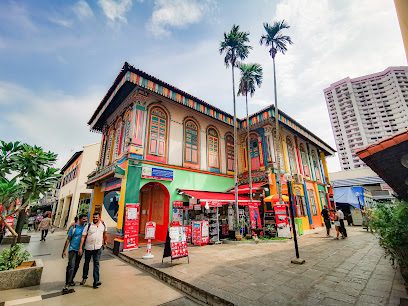
Indian National Army Historic Marker
Explore the Indian National Army Historic Marker in Singapore to witness a significant tribute to the courage and sacrifices during the fight for India's independence.

Little South India
Explore Little South India, a vibrant cultural enclave in Singapore that offers a rich tapestry of traditions, cuisine, and heritage experiences.

Small Open Park
Experience the tranquility of Small Open Park, a serene escape in Singapore's vibrant Little India, perfect for relaxation and cultural exploration.

Mahatma Gandhi Memorial
Explore the Mahatma Gandhi Memorial in Singapore's Little India, a serene tribute to peace and non-violence amidst vibrant culture.
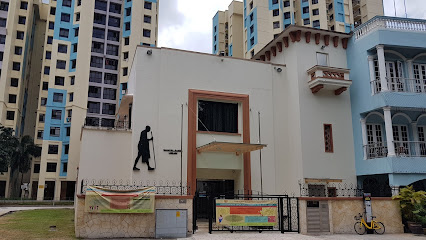
Unmissable attractions to see
Resorts World Sentosa
Discover the ultimate luxury and thrill at Resorts World Sentosa, Singapore's premier destination for entertainment, dining, and relaxation.

Jewel Changi Airport
Explore Jewel Changi Airport: a stunning fusion of nature, shopping, and entertainment, redefining the airport experience in Singapore.

Merlion Park
Discover the stunning Merlion Park, an iconic Singaporean attraction featuring breathtaking views of the skyline and the symbolic Merlion statue.
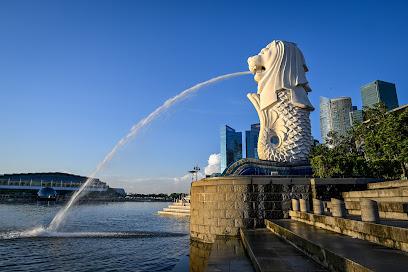
Singapore Changi Airport
Experience the extraordinary at Singapore Changi Airport, a world-class travel hub with stunning gardens, shopping, and dining options that redefine airport visits.

Marina Bay Sands Singapore
Experience the luxury and allure of Marina Bay Sands, Singapore's premier destination for stunning views, exquisite dining, and unforgettable entertainment.

Supertree Grove
Explore the breathtaking Supertree Grove, a stunning blend of nature and technology at Gardens by the Bay, Singapore's iconic tourist attraction.

Singapore Zoo
Discover the beauty of wildlife at Singapore Zoo, where conservation meets immersive experiences in a stunning natural setting.
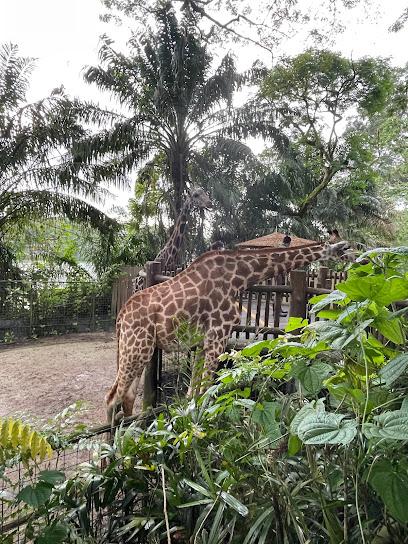
Singapore Botanic Gardens
Explore the lush landscapes and diverse flora at Singapore Botanic Gardens, a UNESCO World Heritage Site and a tranquil escape in the heart of the city.

Clarke Quay
Experience the vibrant nightlife and diverse culinary offerings at Clarke Quay, Singapore's premier riverside destination for tourists and locals alike.
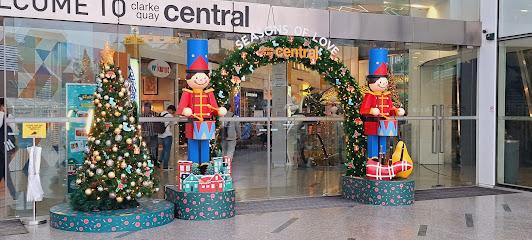
S.E.A. Aquarium
Explore the fascinating underwater world at the S.E.A. Aquarium, where adventure meets conservation in the heart of Singapore's Sentosa Island.

Lau Pa Sat
Discover the vibrant flavors of Singapore at Lau Pa Sat, a historic hawker center offering local delicacies in a charming atmosphere.

Night Safari
Experience the thrill of the Night Safari in Singapore, where the wonders of the wild come alive after dark in an unforgettable nocturnal adventure.

Cloud Forest
Explore the Cloud Forest in Singapore, a unique indoor garden with stunning waterfalls, exotic plants, and an enchanting atmosphere perfect for nature lovers.

LEGOLAND Malaysia
Experience the wonder of LEGOLAND Malaysia, where adventure meets creativity in a LEGO-filled playground for all ages.

Flower Dome
Explore the Flower Dome at Gardens by the Bay, Singapore's breathtaking sanctuary of vibrant blooms and diverse ecosystems.

Essential places to dine
Komala Vilas Restaurant, Singapore
Discover authentic South Indian vegetarian cuisine at Komala Vilas Restaurant in Singapore—where every dish tells a story.

Khansama @ Little India
Experience the essence of Indian culinary art at Khansama in Little India—an exquisite blend of tradition and taste awaits you.

Gayatri Restaurant
Experience the vibrant tastes of India at Gayatri Restaurant, where every dish tells a story of culinary tradition.

The Banana Leaf Apolo
Experience authentic South Indian flavors at The Banana Leaf Apolo in Singapore's Little India - where tradition meets taste.
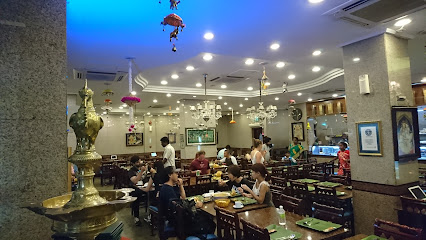
Kailash Parbat Restaurant
Experience authentic Indian flavors at Kailash Parbat Restaurant in Singapore's vibrant Central Area - A must-visit culinary destination!

Muthu's Curry
Experience the rich tapestry of Indian flavors at Muthu's Curry in Singapore - home to exquisite dishes and warm hospitality.

Mustard Singapore - Flavours of Bengal & Punjab
Discover authentic Indian cuisine at Mustard Singapore - where Bengal meets Punjab in every flavorful dish.

Jaggi’s Northern Indian Cuisine
Savor the essence of Punjab at Jaggi’s Northern Indian Cuisine - where tradition meets taste in every bite.

Kolkata Beckons
Discover the rich flavors of Assam and Bangladesh at Kolkata Beckons – your gateway to authentic northeastern Indian cuisine in Singapore.

Anjappar Chettinad Restaurant
Savor authentic Chettinad cuisine at Anjappar Restaurant in Singapore – where every dish tells a story of tradition and flavor.

Gandhi Restaurant and Catering
Savor the essence of India at Gandhi Restaurant with authentic dishes that delight your senses in Singapore's Central Area.

Tangra Chinese
Discover Tangra Chinese in Singapore – where Indian spices meet Chinese culinary artistry for a unique dining experience.

Chimichanga Little India
Experience the vibrant flavors of Mexico at Chimichanga Little India – where traditional dishes meet modern fusion in Singapore's cultural heart.

Madras New Woodlands Restaurant
Experience the vibrant flavors of South India at Madras New Woodlands Restaurant in Singapore – your go-to spot for delicious vegetarian delights.

Machan's kitchen
Discover authentic Indian cuisine at Machan's Kitchen in Singapore – a culinary gem offering rich flavors and vibrant dining experiences.

Markets, malls and hidden boutiques
Little India Arcade
Experience the colorful culture and culinary delights of Little India Arcade, a vibrant hub in Singapore's Indian community, perfect for shopping and dining.

Jothi Store & Flower Shop
Explore Jothi Store & Flower Shop, Singapore's vibrant florist, offering exquisite blooms and unique gifts in a welcoming atmosphere.

Dakshaini Silks: Singapore’s Premiere Silk Saree Emporium
Explore the elegance of Dakshaini Silks, Singapore's premier emporium for authentic silk sarees and designer clothing, where tradition meets modern sophistication.
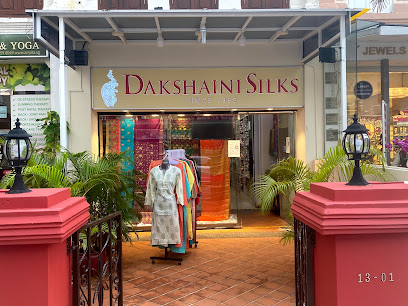
Selva Arts & Crafts
Explore the vibrant world of handmade crafts at Selva Arts & Crafts, Singapore's premier destination for unique souvenirs and artistic treasures.

Haniffa Textiles Pte Ltd
Discover the rich tapestry of Singapore's ethnic fashion at Haniffa Textiles, where tradition meets contemporary style in every fabric.

Nalli Pte Ltd
Explore the elegance of Indian sarees and women's clothing at Nalli Pte Ltd, a cultural gem in Singapore's Central Area.

Colours Boutique
Experience Singapore's fashion scene at Colours Boutique, where exquisite sarees and contemporary styles blend in a charming atmosphere.

TipTop Collections
Explore the chic and trendy selection of women's clothing at TipTop Collections, Singapore's premier destination for unique fashion finds.

Nalli Chinnasmi Chetty Pte Ltd - நல்லி சின்னசாமி செட்டி
Discover exquisite silk sarees and traditional Indian attire at Nalli Chinnasmi Chetty, a shopping gem in Singapore's vibrant Central Area.

ANGKARA
Explore Angkara, Singapore's vibrant women's clothing store, blending modern fashion with traditional influences in the heart of Little India.

THEPKM.CO
Discover unique fashion pieces at THEPKM.CO, Singapore's boutique clothing store known for its one-of-a-kind designs and vibrant colors.

V Mystique
Explore V Mystique in Singapore for a unique shopping experience with stylish clothing and personalized service in the heart of the city.
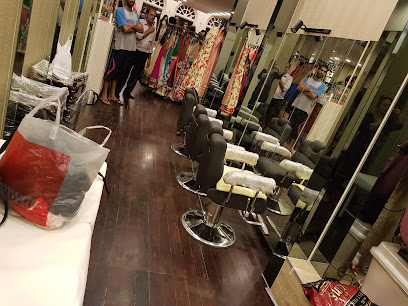
Raz Boutique
Experience the charm of designer fashion at Raz Boutique, where elegance meets contemporary style in the heart of Singapore.

Namastey Bollywood
Explore the vibrant world of Indian fashion at Namastey Bollywood in Singapore, offering exquisite women's clothing and tailoring services.

Singapore Indian Handloom
Discover the essence of Indian craftsmanship at Singapore Indian Handloom, where vibrant textiles and rich culture come together in Little India.
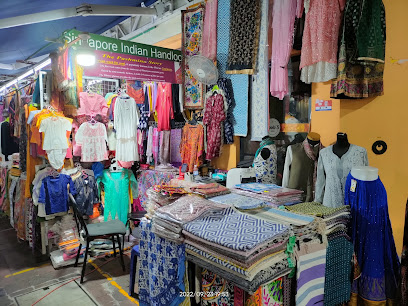
Essential bars & hidden hideouts
Khansama @ Little India
Explore the rich flavors of authentic Indian cuisine at Khansama @ Little India, where every meal is a journey through Punjab's culinary heritage.

The Countryside Café
Discover The Countryside Café, where rustic charm meets urban dining with delicious grilled dishes and a cozy, inviting atmosphere.

OwlsBrew
Discover OwlsBrew, the quintessential gastropub in Singapore, where innovative cuisine meets a vibrant atmosphere for an unforgettable dining experience.

KUBES Indian Restobar
Experience the vibrant flavors of India at KUBES Indian Restobar, a delightful fusion of traditional cuisine and modern dining in Singapore.

Olibier Rooftop Bar
Discover the breathtaking views and exquisite cocktails at Olibier Rooftop Bar, a must-visit destination in Singapore's vibrant nightlife.

Whiskey Library & Jazz Club
Discover a unique fusion of whiskey, exquisite Indian cuisine, and live jazz at Whiskey Library & Jazz Club in Singapore, a must-visit for connoisseurs.

LittleEasy Bistrobar
Experience the vibrant flavors of Singapore at LittleEasy Bistrobar, where culinary diversity meets a welcoming bistro atmosphere.

Lofty Peaks
Discover Lofty Peaks, a vibrant cocktail bar in Singapore, where mixology meets a lively atmosphere for an unforgettable night out.

Luxuria (Rooftop)
Discover Luxuria Rooftop, Singapore's premier bar and restaurant, offering breathtaking views, innovative cocktails, and a delightful culinary experience.

Mohicans Pub & Music Lounge
Discover the lively atmosphere of Mohicans Pub & Music Lounge in Singapore, where great music and drinks create unforgettable nights out.
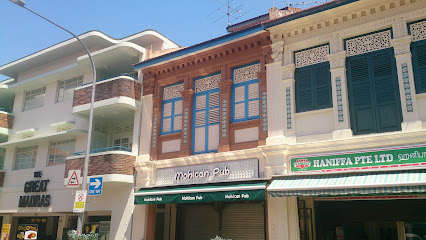
Flair Cafe
Discover Flair Cafe in Singapore: A lively bar with creative cocktails and a vibrant atmosphere perfect for unwinding after a day of exploration.
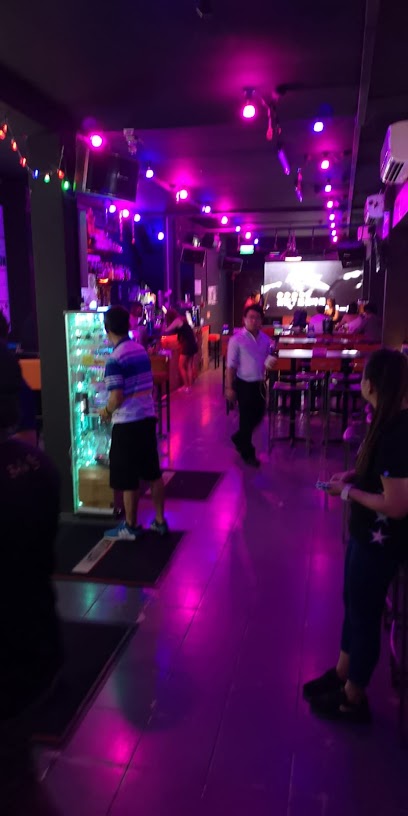
A Tiger's Tale
Experience the vibrant nightlife at A Tiger's Tale, a unique pub in Singapore's Central Area, known for its creative cocktails and lively atmosphere.

Sargam Hindi Music Lounge
Experience the vibrant atmosphere of Sargam Hindi Music Lounge in Singapore, where Hindi music and lively nights come together for an unforgettable experience.

Jannahad Music Longe
Discover Jannahad Music Lounge, a vibrant pub in Singapore offering live music and a lively atmosphere for an unforgettable nightlife experience.

Sneha Bistro bar
Discover Sneha Bistro Bar in Singapore: Relish exquisite dishes and refreshing drinks in a vibrant atmosphere that celebrates culinary diversity.

Local Phrases
-
- Helloவணக்கம்
[Vanakkam] - Goodbyeபிரியாதொரு
[Piriyaadhuoru] - Yesஆம்
[Aam] - Noஇல்லை
[Illai] - Please/You're welcomeதயவு செய்து
[Thayavu seydhu] - Thank youநன்றி
[Nandri] - Excuse me/Sorryமன்னிக்கவும்
[Mannikkavum] - How are you?எப்படி இருக்கிறீர்கள்?
[Eppadi irukkirirkal?] - Fine. And you?நன்று. நீங்கள் எப்படி?
[Nandru. Neengal eppadi?] - Do you speak English?உங்கள் ஆங்கிலம் பேசுதா?
[Ungal aangilam pesutha?] - I don't understandபுரியவில்லை
[Puriyavillai]
- Helloவணக்கம்
-
- I'd like to see the menu, pleaseமென்யூ பார்க்க விரும்புகிறேன்
[Menu paarukka virumbukirean] - I don't eat meatநான் மாம்ஸம் சாப்பிடவில்லை
[Naan maamsam saappidavillai] - Cheers!ஆரோக்கியம்!
[Aaroggiyam] - I would like to pay, pleaseபணம் சம்பாதிக்க விரும்புகிறேன்
[Panam sambadhikka virumbukirean]
- I'd like to see the menu, pleaseமென்யூ பார்க்க விரும்புகிறேன்
-
- Help!உதவி!
[Udhavi!] - Go away!போகுங்க!
[Pogungka!] - Call the Police!காவலரை அழைக்கவும்!
[Kaavalarai azhaikkavum!] - Call a doctor!மருத்துவரை அழைக்கவும்!
[Maruthuvarai azhaikkavum!] - I'm lostஎனக்கு தோல்வி
[Enakku tholvi] - I'm illஎனக்கு நோய்
[Enakku noy]
- Help!உதவி!
-
- I'd like to buy...வாங்க விரும்புகிறேன்...
[Vaanga virumbukirean...] - I'm just lookingபார்க்கிறேன்
[Paarkirean] - How much is it?எவ்வளவு?
[Evvvalu?] - That's too expensiveஅது மிகவும் விலையாகும்
[Athu mikavum vilaiyaagum] - Can you lower the price?விலையை குறைக்க முடியுமா?
[Vilaiyai kurraikka mudiyuma?]
- I'd like to buy...வாங்க விரும்புகிறேன்...
-
- What time is it?எது நேரம்?
[Edu neram?] - It's one o'clockஒரு மணி
[Oru mani] - Half past (10)10 க்கு அரை
[10 kku arai] - Morningகாலை
[Kaalaai] - Afternoonமதியம்
[Mathiyam] - Eveningமலை
[Malai] - Yesterdayநேற்று
[Netru] - Todayஇன்று
[Indru] - Tomorrowநாளை
[Naalai] - 1ஒன்று
[Onru] - 2இரண்டு
[Irandu] - 3மூன்று
[Moonru] - 4நான்கு
[Naanku] - 5ஐந்து
[Aindhu] - 6ஆறு
[Aaru] - 7ஏழு
[Ezhu] - 8எட்டு
[Ettu] - 9ஒன்பது
[Onpathu] - 10பத்து
[Pathu]
- What time is it?எது நேரம்?
-
- Where's a/the...?எங்கே உள்ளது...?
[Engae ulladhu...?] - What's the address?முகவரி என்ன?
[Mugavari enna?] - Can you show me (on the map)?எனக்கு கார்ட் காலம் காட்டுவீர்களா?
[Enakku kaart kaalam kaattuveergala?] - When's the next (bus)?அடுத்த (பஸ்) எப்போது?
[Adutha (bus) eppothu?] - A ticket (to ....)ஒரு டிக்கெட் (க்கு ....)
[Oru ticket (kku ....)]
- Where's a/the...?எங்கே உள்ளது...?
History of Little India
-
Little India, located in the Rochor area of Singapore, began to take shape in the early 19th century. Indian convicts were among the first to be settled in this area by the British colonial administration. They were involved in various public works projects, including the construction of buildings and roads. The area soon became a hub for Indian immigrants, many of whom were involved in trade, cattle rearing, and brick-making. The Sri Veeramakaliamman Temple, built in 1855, stands as a testament to the early Indian settlers' devotion and community spirit.
-
By the late 19th and early 20th centuries, Little India flourished as a commercial center, particularly known for its cattle trade. Buffalo Road, named after the cattle that were once herded and traded there, remains a historical landmark. The area also became a bustling marketplace for spices, textiles, and traditional Indian goods. Tekka Market, established in the 1920s, became a focal point for fresh produce and traditional Indian ingredients, further cementing the area's reputation as a vibrant commercial hub.
-
Little India is home to some of Singapore's most iconic cultural and religious landmarks. The Sri Veeramakaliamman Temple, dedicated to the Hindu goddess Kali, is one of the oldest Hindu temples in Singapore. The temple's intricate architecture and vibrant festivals, such as Deepavali and Thaipusam, draw both locals and tourists. Additionally, the Abdul Gafoor Mosque, built in 1907, serves as a significant religious site for the Muslim community in Little India. These landmarks highlight the area's rich cultural tapestry and religious diversity.
-
During the British colonial period, Little India underwent significant urban development. The British established various amenities and infrastructure, including schools, hospitals, and public utilities, to support the growing population. The introduction of the electric tram system in the early 20th century improved connectivity and accessibility, making Little India a more attractive destination for settlers and traders. The colonial influence is still evident in the architectural styles of some buildings, blending traditional Indian designs with colonial elements.
-
After World War II, Little India saw significant changes as Singapore embarked on its journey towards modernization. The area experienced urban renewal projects aimed at improving living conditions and infrastructure. In the 1960s and 1970s, the Housing and Development Board (HDB) initiated redevelopment plans, which included the construction of public housing and commercial complexes. Despite these changes, efforts were made to preserve the cultural heritage and historical landmarks of Little India, ensuring that its unique character remained intact.
-
Today, Little India is a vibrant and bustling enclave that attracts both locals and tourists alike. The area is renowned for its colorful street art, aromatic spice shops, and bustling markets. Serangoon Road, the main thoroughfare, is lined with a mix of modern stores and traditional shops selling Indian textiles, jewelry, and handicrafts. The annual Deepavali light-up transforms Little India into a dazzling spectacle of lights and festivities, celebrating the Hindu festival of lights. Little India's enduring charm lies in its ability to blend the old with the new, offering a rich and immersive cultural experience.
Little India Essentials
-
Little India is located in the central region of Singapore. The most convenient way to get there is by MRT (Mass Rapid Transit), Singapore's efficient rail system. Take the North-East Line (Purple Line) and alight at Little India MRT Station (NE7). Alternatively, you can take the Downtown Line (Blue Line) and alight at Rochor MRT Station (DT13) or Jalan Besar MRT Station (DT22). Both are within walking distance to the main attractions in Little India. Taxis and ride-hailing services like Grab are also readily available.
-
Once in Little India, the best way to explore is on foot, as the area is compact and many attractions are close to each other. For longer distances, you can use the MRT, buses, or taxis. Buses 23, 64, 65, 67, and 131 all serve the area. Bike-sharing services are also available, allowing for a leisurely ride through the vibrant streets.
-
The official currency is the Singapore Dollar (SGD). Credit and debit cards are widely accepted in most shops, restaurants, and hotels. However, it's a good idea to carry some cash for smaller purchases, especially in local markets and smaller eateries. ATMs are readily available throughout Little India, and currency exchange services can be found in various locations.
-
Little India is generally a safe area for tourists. However, it's wise to take standard precautions such as keeping an eye on your belongings and avoiding poorly lit or deserted areas at night. While crime rates are low, petty theft can occur in crowded areas. Always be vigilant and aware of your surroundings.
-
In case of emergency, dial 999 for police assistance or 995 for an ambulance and fire services. There are several clinics and pharmacies in the area for minor health issues. The nearest hospital is Tan Tock Seng Hospital, located a short drive away. It is also advisable to have travel insurance that covers medical emergencies.
-
Fashion: Do dress modestly, especially when visiting religious sites like temples. Avoid wearing revealing clothing. Religion: Do remove your shoes before entering temples and respect local customs. Don't take photos inside temples without permission. Public Transport: Do give up your seat to elderly passengers. Don't eat or drink on public transport. Greetings: Do greet people with a smile and a simple 'hello.' Don't hug or kiss strangers as it may be considered inappropriate. Eating & Drinking: Do try local delicacies and accept food offerings graciously. Don't waste food, as it is considered disrespectful.
-
To experience Little India like a local, visit the Tekka Centre, a bustling market offering fresh produce, spices, and local delicacies. Engage with shop owners and learn about traditional Indian ingredients and cooking methods. Don't miss the vibrant street art and murals that adorn the neighborhood, especially around Hindoo Road and Kerbau Road. For an authentic experience, join in the festivities during Deepavali, the Hindu Festival of Lights, when the area is beautifully lit and decorated.
Trending Landmark in Little India
-
Sri Veeramakaliamman Temple
-
Sri Srinivasa Perumal Temple
-
Kailash Parbat Restaurant
-
Little India Arcade
-
Former House of Tan Teng Niah
-
Indian Heritage Centre
-
Singapore Visitor Centre @Indian Heritage Centre
-
Masjid Abdul Gafoor
-
Siddh Peeth Shree Lakshminarayan Temple
-
The Gem Museum
-
The Indian Heritage Pte Ltd
-
Indian National Army Historic Marker
-
Little South India
-
Small Open Park
-
Mahatma Gandhi Memorial
Nearby Cities to Little India
-
Things To Do in Bugis
-
Things To Do in Clarke Quay
-
Things To Do in Orchard Road
-
Things To Do in Marina Bay
-
Things To Do in Chinatown
-
Things To Do in Bukit Timah
-
Things To Do in Singapore
-
Things To Do in Sentosa
-
Things To Do in East Coast Park
-
Things To Do in Tampines
-
Things To Do in Yishun
-
Things To Do in Sembawang
-
Things To Do in Jurong
-
Things To Do in Johor Bahru
-
Things To Do in Malacca













